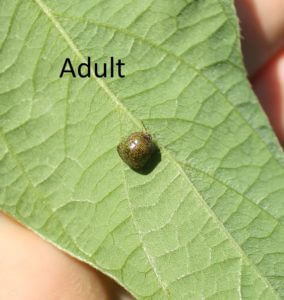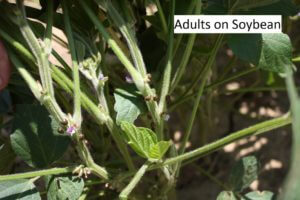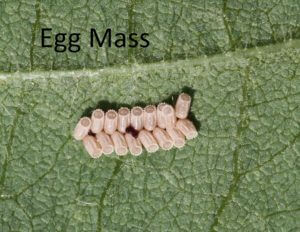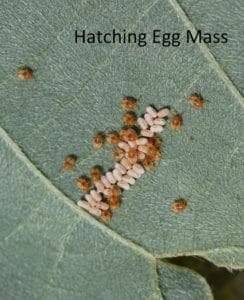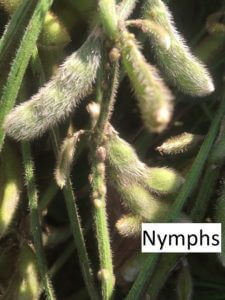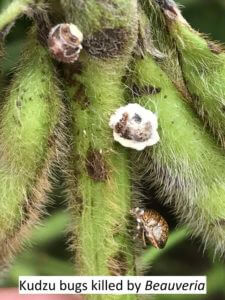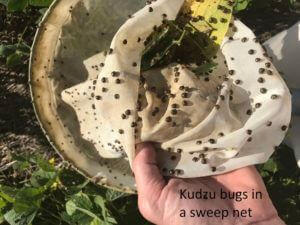Management options
| Insecticide (Trade Names) for KUDZU BUG | Lb Active Ingredient per Acre | Amount Formulation per Acre | Performance Rating |
|---|---|---|---|
| acephate 90 (Orthene 90S) | 0.75 - 0.99 | 0.83 - 1.10 lb | 7 |
| bifenthrin (Brigade 2E, Discipline 2E, Fanfare 2E) | 0.078 - 0.10 | 5 - 6.4 oz | 9+ |
| γ-cyhalothrin (Declare 1.25) | 0.0125 - 0.015 | 1.28 - 1.54 oz | 8 |
| λ-cyhalothrin (Warrior II 2.08) | 0.031 | 1.92 oz | 9 |
| Z-cypermethrin (Mustang Maxx 0.8E) | 0.025 | 4 oz | 9 |
- Treatment based only on the presence of adults is generally discouraged because reinfestations may occur quickly, and it takes sustained infestations to cause yield loss.
- One well-timed insecticide application will generally provide satisfactory control.
- A white-colored fungus, Beauveria bassiana, often attacks kudzu bugs and suppresses or almost completely controls infestations.
- For more information see http://www.utcrops.com/soybean/soybean_insects/SoybeanKudzuBug.htm.
